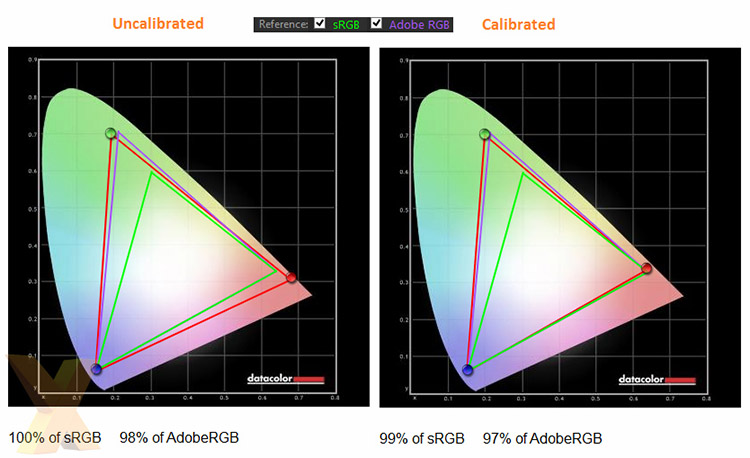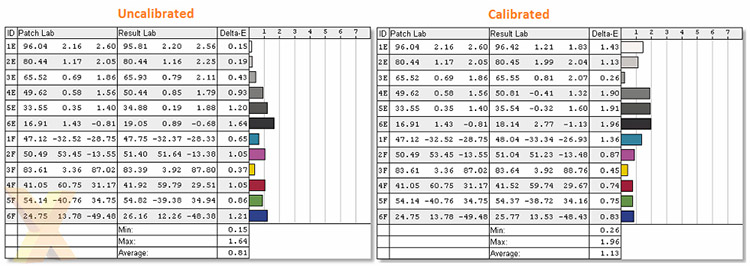Testing methodology
A monitor review based on descriptive visual analysis will always have the underlying problem of subjectivity; assessments of panel quality will vary from user to user depending on their normative expectations. To get around this we’re deploying Datacolor’s Spyder 4 Elite professional monitor analyser to return a quantitative assessment of display quality. We also make use of the Leo Bodnar video signal input lag tester which allows us to test the combined input latency of a specific monitor at the 1080p resolution with 60Hz operation only (a limitation of the testing equipment).
These numerical results, we feel, add extra utility to our reviews allowing us to more accurately benchmark the following display characteristics:
- Colour Gamut relative to sRGB and AdobeRGB industry-standards
- Brightness levels and contrast ratios
- Colour uniformity
- Brightness uniformity
- Colour accuracy
- Input latency
The tests are run under two different scenarios: uncalibrated and calibrated. Uncalibrated performance equates to the ‘out-of-the-box’ settings a monitor ships with; this is the typical end-user experience as very few consumers engage in calibration of their displays before use. Calibrated performance is what results after the monitor has been put through the Spyder4Elite hardware-calibration process with the following parameters: 2.2 Gamma, 6500k colour temperature and 120 nits of brightness. These calibrated results demonstrate what the monitor is capable of when tuned correctly but the results have limited relevance to most consumers who will not calibrate their monitors.
Colour
BenQ claims 99 per cent AdobeRGB and we recorded 98 per cent in our testing, which is well within an acceptable margin of error. The Spyder4Elite calibration process appears to shrink the colour gamut a little highlighting the limitations of generic software calibration tools.
Colour accuracy is superb in factory-shipped condition with an average Delta-E of 0.81, or well below the figure of 2 quoted in BenQ's specifications. Calibration degraded this accuracy by a slight amount suggesting that further calibration isn't worthwhile. However, using BenQ's software we were able to improve colour accuracy even further as we'll detail in the software section.
Colour uniformity is very strong given the results we recorded for a similar panel in the Philips 272P4APJKHB. The uniformity of panel does tend to vary notably with the manufacturing process so your mileage may vary.












